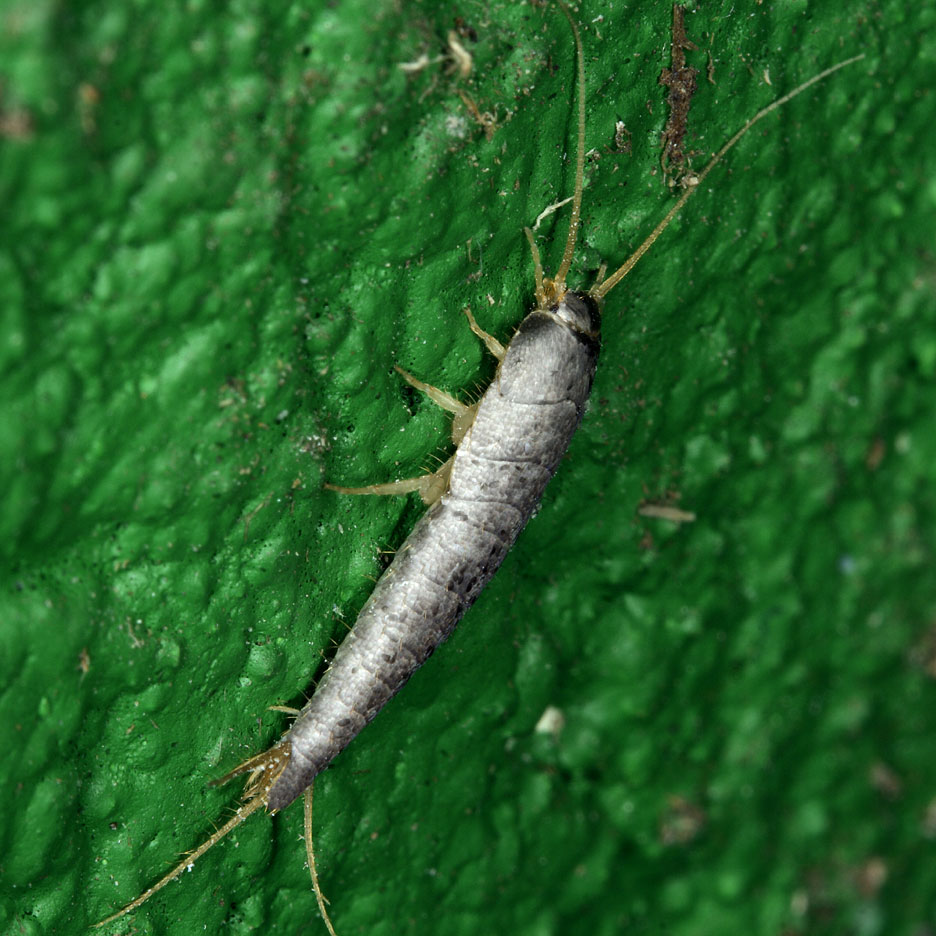Silverfish
Silverfish and firebrats belong to the insect order Thysanura. These insects differ from most other insects by continuing to molt, or shed their exoskeleton, throughout their entire lives.
Silverfish and firebrats are usually considered a nuisance when they invade homes. They consume and stain books, fabric, foods and wallpaper. These insects prefer starchy foods such as flour, rolled oats, paper or glue. Damage is only significant if a large population is present for a long period of time.
Biology and Description
Silverfish and firebrats have flattened elongate bodies that taper at the end like a carrot. They have chewing mouthparts, long antennae, no wings and three tail-like projections at the end of the abdomen. Fine scales cover their bodies. Silverfish and firebrat immatures look like the adults, only smaller in size.
Silverfish and firebrats typically run quickly and are mostly active at night. In homes, they are commonly found in closets, attics or near bookcases and hide behind baseboards or casings around doors and windows.
The silverfish, Lespisma saccharina (Linnaeus), is probably the most important pest species of Thysanura. Silverfish like temperatures between 70-80° F with a relative humidity of 75-95%. Females lay eggs singly or in batches either daily or at irregular intervals depending on food availability. Eggs hatch in about 40 days with low temperatures (about 70° F) or 20 days with high temperatures (about 90° F). Silverfish may molt up to 60 times in their lifetime, which is usually about 2-3 years.
The firebrat, Thermobia domestica (Packard), is similar to silverfish, but is mottled brown. Firebrats prefer temperatures over 90° F and therefore are often found near ovens, dryers or hot water heaters. Eggs are laid in batches with an average of 50 per batch. Under good conditions, the eggs hatch within 13 days and the nymphs begin to their development. Firebrats may molt 50 to 60 times during its lifespan which can be up to 2 years in warm areas.
